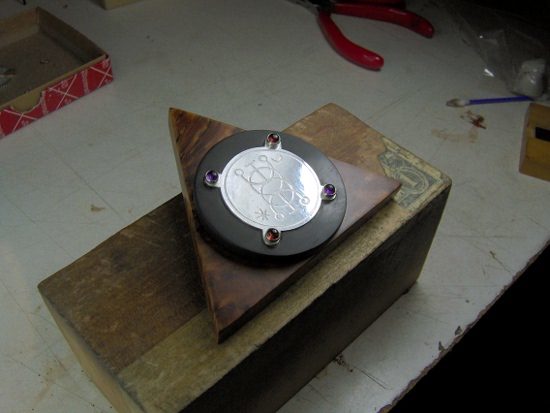Dies Mars
Luna wx 4%v
“But on the whole, grief has been privatised and no longer needs special clothes to advertise its presence so that the entire world may see and participate in it. A funeral is no longer an invitation to share a common distress at the ubiquitousness of mortality. Lou Taylor cites an ‘old-fashioned’ funeral in Sussex, 1971, when twenty black limousines followed a horse-drawn hearse; the deceased was a scrap merchant and the black-clad festival of his interment not so much of another time as from another culture, one in which life is theatre and needs an audience, not one in which life, like television, is best enjoyed in the privacy of one’s own home amid a small circle of close kin.
– Angela Carter, from the review “Lou Taylor: Mourning Dress”, New Society, 1983
What might be substituted for the word “grief”? This seems to apply to a great many more human social activities than perhaps it did in 1983.
.
“The bourgeoisie always prefer to experience popular art second-hand, in museums, art-galleries and the pages of coffee table books; that way, you run no risk of actually having any fun, or being forced to submit to the indignity of the Demon Whirl or the Lightning Jets. Since the fun of the fair is entirely sensational – that is, a direct, visceral assault on the senses – and may be experienced cheaply and without guilt; it has no connotations, not of the erotic, which is all in the mind, but straightforwardly sexual, which is all in the flesh and blood.”
“A fairground is a fun cathedral for the poor. It is visually a hard-edged world, in which most of the decorative detail is two-dimensional, executed in that kind of trompe de l’oeil which deceives nobody and is intended to deceive nobody…Compare the work of the fairground artist, Fred Fowle…with the effects inside a 1930’s super-cinema, the Tooting Bec Granada, say. Fowle’s work is upfront, straightforward, it hits you in the eye; it was he who introduced primary colors into the fairground in the 1930’s. It is decoration which is part of machines whose function is not to procure dreams but to excite the senses. Not the delineation of an invented reality but an exaggeration of concrete images to do with real sensation. On the other hand, Tooting Bec Granada, with its cyclorama of moving cloud and gallery of mirrors, is an interior constructed wholly of fantasy, of illusion. That is why the marble there is real.”
-Angela Carter, from the article “Fun Fairs”, New Society, 1977
She touches on this theme in her 1974 review of Linda Lovelace’s bio as well. The apparent safety of engagement at a distance, porno films versus in-person sexual experience. The apparent safety of discontinuity? (Ren?) It breeds ghosts. Whatever would she think of fb, of texting?
The word itself, whether spoken or written, is of course the original buffering and interpretive agent for direct experience. The art of it goes way back. Some would say that that particular thing is a prime identifier of what makes us human. Whether it is an active word or a passive word depends on the user. Does it invite-in, as in fantasy stimulating the imagination , or does it confront and impact as in riding the carousel or being slammed about in the bumper cars? Is it primarily visceral or intellectual? What places on the ratio-spectrum between the two does effectiveness thrill begin to wane/pick up?
*In my usage here: word=symbolic thought + markings or sounds that serve to represent other things, actions, or concepts. That are meaning-holders.
Re: inviting-in / confrontation: Objects themselves can be dominant or submissive in regard to their relationship with the wearer/bearer/observer. Jewelry is an easy example of this- beautiful stones set in classic settings are meant to enhance the beauty of the wearer, to draw attention to parts of their body. It is submissive to the wearer. Art jewelry that tends toward the sculptural or an extraordinarily big/flashy/rare brace of jewels demands its own stage (the body of the wearer) and monopolizes visual attention. It has a dominant, assertive aspect.
